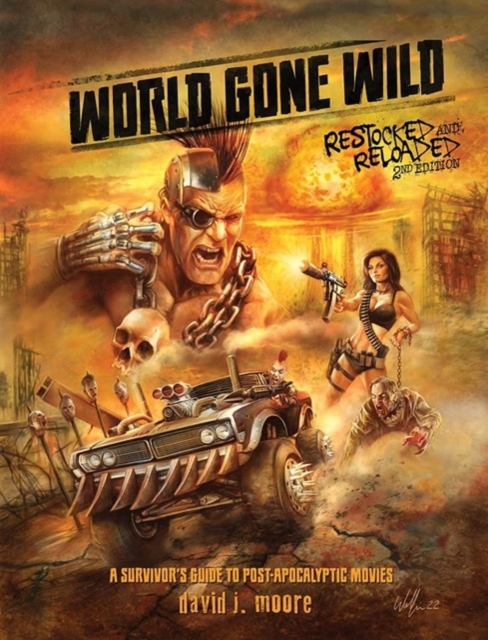
Books
World Gone Wild (Second Edition) Review
Author: David J. Moore.
David J Moore’s 2nd edition of World Gone Wild (an already impressive tome) is a very impressive update. In fact, 50% of an update if you can believe that! The original book came in at around 430 pages and the new one now exceeds 650! Owning the previous version, I know what a treat we were in for with this. It’s been the better part of a decade since the original version and there is a lot of new material covered and added to this update.
So what is it? World Gone Wild is the only encyclopedia of post-apocalypse films you will ever need. The A-Z format of reviews is easy to understand and given a 5-star rating system (but here instead using levels of toxicity to rate how well the films are received). Added to this there is an extended introduction and multiple interviews layered throughout the book. The late Albert Pyun is interviewed countless times. The end of the book features various indexes that help you categorise various films into various subgenres and directors. These are handy as we are delving right down to the cheapest made films that came out first to video back in the 80s and 90s. The coverage is easily the highlight of this book and the colourful layout makes it indispensable for fans of the genre.
A few adjustments have been made the the book. New cover art for a start. The format has largely stayed the same but some of the images have been moved around and many new ones added.
Of course, the reviews are subjective and down to the author’s taste so you will find from time to time that you get perplexed as I did with some of the ratings given to certain films: Akira a 3? Alita: Battle Angel a 5? Zardoz is a 5!
The ratings for the Resident Evil movies are also interesting: Films 1, 2 and 5 get 2 stars each. The 6th film gets 3 stars, and then the 3rd and 4th get 4 stars. You will likely disagree with many ratings, but the words given to each review are where you will find the true value in this book as time has been put into viewing each piece and describing what it is, who it comes from, from what era and what impact, if any, it has on the subgenre.
Speaking of the Resident Evil franchise, some text is now out of date in the new edition. In the previous edition, Paul WS Anderson was interviewed and the intro text to that interview states that there are 5 Resident Evil films (as there were at the time). But now Anderson has completed that series with 6 films and then there has been another go at the series with Welcome to Racoon City. It’s a small gripe, but the editor finds mistakes. It would have been an easy fix to just re-write that intro to the interview. But, perhaps the old text wasn’t proofread for this edition.
There is also resistance to fully indexing the book. Having the titles listed A-Z is fine, but when you create glossaries of subgenre subject matter, and director names, not to mention all of the inserted interviews throughout the book – it may be easier for people who want to study those particular parts of the book to have the page numbers to go to find them. Now to be fair, there are 70 pages of listed material at the back of the book. Only one page contains page numbers and that is for the interviews (for which, we give thanks). To fully index the rest would take a bit of work, but it is possible and hopefully is what we can look forward to in the third edition which hopefully will come in time. We just hit a year full of post-apocalypse cinema and TV, so Moore already has his work cut out for him going forward. A contents page at the front would be handy too!
These gripes aside, this is a terrific book. Moore is fairly well known for his knowledge of action cinema. He appeared as one of the many interviewees for the documentary In Search of the Last Action Hero. He also has a book very much like this one based on the action genre called The Good, The Tough and The Deadly – which one might assume will also get a second edition in the near future, and most welcome it will be. Beyond that – I hope he gives us even more books to enjoy. These are great for research purposes and for expanding one’s own knowledge of the genre. Movie nerdom need more books like this one, even if just for the sake of posterity.
Steven Hurst




